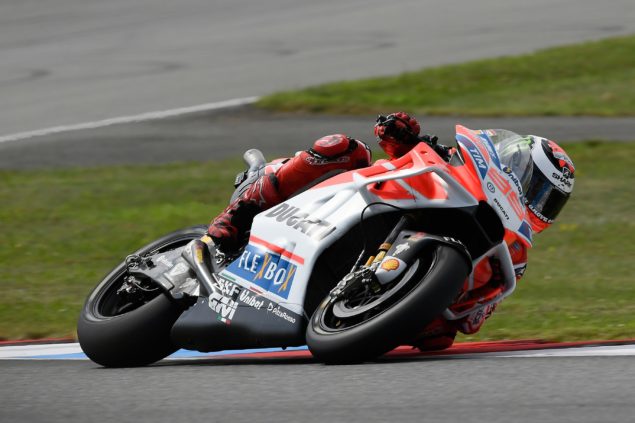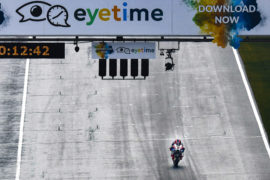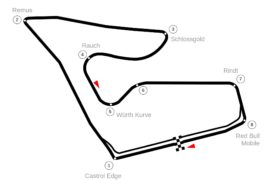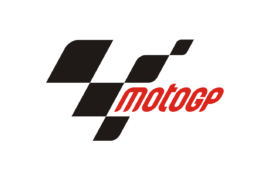MotoGP is back, and so naturally, so is the rain. The weather continues to plague Grand Prix motorcycle racing, the weekend starting off in the pouring rain making for a wet FP1.
Despite the heat, Brno is slow to dry, and so the MotoGP bikes started FP2 on a damp track with a dry line, the track ending the session almost completely dry. Hardly an ideal start to the weekend, if you are focused on finding the best setup possible for the race on Sunday.
Not everyone sees it that way, however. For Johann Zarco, it was nice to ease himself gently back up to speed. “Restarting the season in wet conditions was good for me,” the Frenchman said.
“This way we start the season slowly, and that’s good for the feeling.” It also reduced the advantage of the big teams who can eke out an advantage in stable conditions.
“Also because we didn’t do a test here, maybe it was better, because if we have a dry track for all the weekend, there are many teams which can work, work, work and be so strong at the end of the weekend. And for our situation as a rookie, it’s good to have this tough weather.”
The wet weather also made it a little easier on bodies which had not ridden a MotoGP bike for four weeks. “Especially it’s difficult about physical condition,” Valentino Rossi said on Friday.
“Because it’s one month without the bike, in the beginning you have some pain in the hands, in the legs. But it was not so hard to arrive to a good level, especially in the wet.”
The training he had been doing for the past couple of weeks – including running a VR46 Master Camp for Yamaha’s riders in the WorldSSP 300 class – had helped him prepare.
“It’s a long break, but in the last weeks I train a lot on the bike, and sincerely, in the last ten days you always think about FP1. So you watch video, try to understand, try to remember the way to ride.”
Whatever the Weather
Changing conditions meant that it is hard to judge where everyone stands, however. Or rather, where they stand in the dry. FP1 on Friday morning was fully wet, riders able to find their pace and focus on a wet setup.
That is a sensible precaution given that the forecast is for rain for most of Sunday. Though as usual, the forecast seems to change by the hour.
In the wet, the timesheets showed some semblance of a return to the old order, with the names of the championship leaders near the top of the timesheets.
But it was Zarco who was fastest in FP1, beating Marc Márquez by a few hundredths, and Jorge Lorenzo by a tenth of a second, while Dani Pedrosa, Valentino Rossi, and Maverick Viñales all close behind.
The Repsol Hondas and the Movistar Yamahas were all very happy with their pace in the wet, though they were less confident about the dry FP2 session.
Both Yamahas were particularly pleased with FP1, given issues in the wet earlier in the year. “I’m quite happy about FP1 because it was quite strong, quite competitive on the wet,” Rossi said. “Under the rain this season I always suffer too much.”
More Power Please
Maverick Viñales had been struggling previously, having a miserable time in the wet at the Sachsenring. But the team had found some solutions at Brno which had helped.
“I feel better than in the Sachsenring, especially in the wet,” he said. “The bike was working quite good. Still, there are some points to improve in the wet but it’s more about electronics than the set-up.”
The solution had been to dial up the power in the wet. “We changed the electronics in the rain conditions, and it was better. We use more power and finally it was much better.”
For some, seeing Jorge Lorenzo in third in the wet was a surprise. The Spaniard has struggled badly in the past, both previously on the Yamaha and this year on the Ducati. But it is not necessarily in the wet where he has problems.
Lorenzo’s issue is low grip and mixed conditions, and Brno, which as a lot of grip in the wet, and a fully wet track, which is very predictable, allows Lorenzo to do what he does best, which is find the limit of grip. The factory Ducati rider finished in third in the morning, a tenth behind Johann Zarco.
In the afternoon, he was nowhere near as fast, but conditions made it hard to judge just where he stands. A drying track is a problem for Lorenzo – those dreaded mixed conditions and unpredictable grip – but he finally had a little help from Ducati.
Lorenzo tried the new aerodynamic package which Michele Pirro and Danilo Petrucci had tested at Misano during the break, and which had met with the approval of the two Italians.
Bologna Fought the Law, and Bologna Won
The new fairing is in some ways a variation on Ducati’s initial “hammerhead” fairing, which the riders rejected after testing ahead of the first race at Qatar. It consists of two pairs of wings connected with a couple of vertical vanes, making it technically a single, unbroken pod.
The shape is such that it is pushing the boundary of the aerodynamic regulations, and to the untrained eye looks like a fragrant breach of the rules. But it has been approved by Danny Aldridge, and signed off for homologation.
Not everyone was impressed. “I hope nobody’s handlebar gets caught in there,” Dani Pedrosa told the Spanish media when asked. The Repsol Honda rider would appear to have a point in terms of safety. But it is also no surprise that Ducati should be pushing the envelope.
In a press conference on Friday featuring the factory managers, Ducati Corse boss Gigi Dall’Igna once again expressed his frustration at the ban on winglets brought in last year. It had been their advantage, and it had been taken away.
Lorenzo’s reaction to the new fairing was positive. “I feel, just in five laps, that we have a better potential with this new fairing – at least for me – than we have with the standard one,” the Spaniard told the media.
The feeling he had been looking for – better contact of the front wheel with the ground, giving him more confidence in the front, and better corner entry – was pretty much there, he said.
“It’s more or less there,” he said. “I think it’s difficult to arrive at the level of the wings, but we are much closer than with the other fairing. The feeling is more-or-less what I expected, even if you feel much more the wind in the shoulders and the hands. We need to try to work on that also. But in general it’s positive. Let’s say 80% positive, 20% negative.”
It was not a magic bullet, however. Just fitting the fairing did not solve all Lorenzo’s woes, the team needed to rebalance the bike to make the best of what the fairing has to offer.
“Tomorrow I would like to make more kilometers, to try to understand which setting will be the right one,” Lorenzo explained. “We didn’t change the setting and for sure this new fairing asks for some modifications to the setting. To try to gain especially more rear grip, because you have more front grip.”
Lorenzo did not try the fairing in the wet, so was uncertain whether it would help there too. The fairing is so new that there simply have not been enough made to risk using it in the wet. If he crashed and damaged the fairing, he would not have one for the race.
Favoritism or Smart Strategy?
Unlike his Ducati teammate, Andrea Dovizioso did not try the new fairing. But this was very much the Italian’s own choice. He hadn’t made a decision about using the fairing or not, Dovizioso said.
“We have to analyze the data from today, from Jorge, and take a decision for tomorrow,” he said. “But I don’t know if we will use this weekend or the next weekend.”
Given the rules on aerodynamics, this is a smart move by Dovizioso. If the data is overwhelmingly positive from Friday, then the Italian could choose to homologate the fairing on Saturday. If he still has some doubts, he can wait until Monday, and test the fairing himself then.
Dovizioso is not having the same issues as Lorenzo, and has been extremely competitive on the Ducati with the standard fairing. He may not wish to gamble on a fairing which he will not be able to modify once he uses it on track.
Seen from that perspective, Dovizioso may choose to wait for the test, so he can provide feedback and then ask Ducati to modify the design more to his needs. The rules allow each rider to use specific fairings, meaning different riders can use different designs.
Two Can Play at That Game
This is what was going on in the Repsol Honda garage. New aero packages appeared on the bikes of Marc Márquez and Dani Pedrosa, with the two packages differing in size.
Márquez’s RC213V had much larger side pods, and consequently, internal vanes with a much larger surface area. Pedrosa’s Honda had much more modest side pods, with a much less pronounced effect.
That was a conscious decision by Pedrosa. It was better to start smaller and focus on getting that working, the Spaniard told us.
This is very much in line with what happened in 2016, when Márquez and Crutchlow went with the big wings on the Honda, while Pedrosa stuck with the smaller ones.
Pedrosa’s focus is now on getting the most out of what he has, rather than spending his time chasing improvements from new parts which may prove to be entirely illusory.
Ducati may be stretching the rules, but Honda is being just as clever, if not more so. Technically, the Repsol Honda fairings do not count as a new fairing under the aerodynamic rules. The rules state that only the external shape of the fairing has to be homologated, and that bolt-on parts may be removed.
The side pods of the RC213V’s fairing are attached by screws, making them removable. As a consequence, they are part of the fairing already homologated at the start of the year. HRC homologated fairings with a bulge.
In the meantime, Honda appears to have spent a lot of time refining the side pods and the ducts, to maximize efficiency and reduce side effects. As long as the outline of that outer bulge remains the same, they are free to do what they want with the internal vanes, and the trailing edge of the side pod.
In the Frame
While Honda and Ducati play with fairings, Yamaha has been messing around with frames for the past few races. At Brno, the frame saga is drawing to a close, at last. Valentino Rossi has two of the new spec chassis he favors, and is confident both wet and dry with the frames.
Maverick Viñales has still not made his mind up, however, and is using two different chassis. The aim is to make a choice on Saturday, and concentrate on just a single from for the rest of the season.
Viñales’ problem is one of turning, he told us on Friday. “I don’t know why but I cannot turn with the bike,” the Spaniard said. “It’s so difficult to make the lap time.” The problem was worse at Brno than it had been previously.
“It’s a similar problem but a little bit bigger. Maybe because of the conditions of today or the grip that was not so good, this problem becomes a little bit bigger. I cannot turn the bike and it’s difficult to stop. As I said, we have to pay attention to the work we are doing right now and, you know, try to find out where is the problem on the bike. It’s very difficult to ride like that and even go fast.”
Yamaha’s search for chassis solutions took them in many different directions. At the factory boss press conference on Friday, Yamaha YZR-M1 project leader Kouji Tsuya revealed that Rossi and Viñales had tested a total of four different chassis at the Barcelona test.
That included going back to the 2016 chassis, he said. That was an interesting comment, as such, as Valentino Rossi had repeatedly stated it was “impossible” to go back to the 2016 bike when journalists compared the issues the factory bikes had with the successes of the Monster Tech 3 Yamaha team.
Friday was no exception: Jonas Folger finished second fastest in FP2, while Johann Zarco finished fourth. Meanwhile, both Rossi and Viñales ended up outside the top ten, the Spanish youngster ending up eleventh while the Italian veteran finished in fourteenth.
Rossi was quick to point out that he had not fitted a new tire for his final run, however, as most of the men at the top of the timesheet had. The same was true for the Repsol Honda riders, both Márquez and Pedrosa favoring race pace on an old tire rather than a quick lap on a new one.
More Parts Please
While all eyes were on the fairings in the Honda and Yamaha garages, it was all change at Aprilia. The factory engineers had worked through the month of July to bring a vast number of new parts to the track. They have a new engine aimed at fixing the reliability problems the previous engine had suffered.
But that was not all. “We have a new shock, we have a new seamless, we have a new airbox,” Espargaro continued. “For the test of Monday we also have a new swingarm. So first of all, I have to say thanks to Aprilia, because they told me that the engineers had no rest, six days in total, working all July to make the RS-GP a more competitive bike.”
Did the new parts help? Espargaro finished in ninth, but position wasn’t everything. He was just fifteen hundredths of a second slower than Johann Zarco in fourth, and a quarter of a second off the time of Danilo Petrucci in third. The gaps at Brno are small. We could well be in for a treat on Sunday.
Photo: Ducati Corse
This article was originally published on MotoMatters, and is republished here on Asphalt & Rubber with permission by the author.




